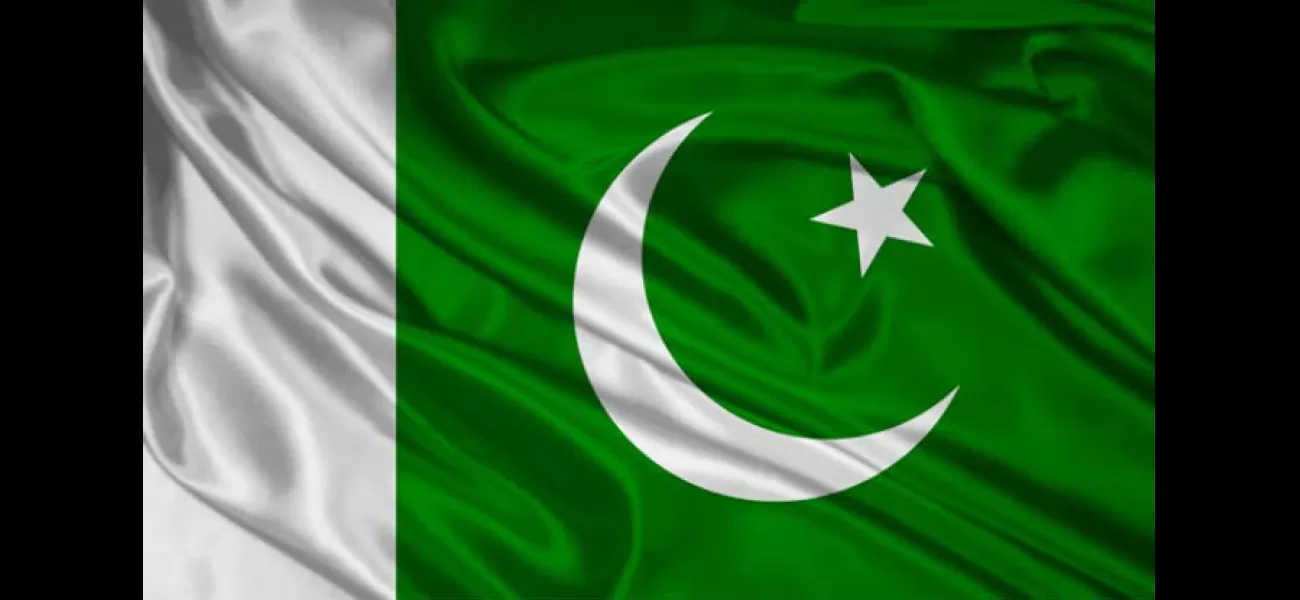Pakistan is setting aside more than Rs 3.79 trillion in funding for a development plan aimed at increasing economic growth.
Pakistan's government has approved a major development plan worth 3.79 trillion rupees for the next fiscal year in an effort to stimulate economic growth.
June 11th 2024.

Pakistan has recently announced a bold plan for its national development, with a whopping budget of Rs 3.79 trillion for the upcoming fiscal year. This decision was made at a high-level meeting of the National Economic Council, chaired by Prime Minister Shehbaz Sharif and attended by all four provincial chief ministers. The meeting lasted for four hours and was held just two days before the much-awaited unveiling of the budget for 2024-25 on Wednesday.
One of the major highlights of this development plan is the significant increase of 47% in the federal Public Sector Development Programme, which now stands at Rs 1.4 trillion compared to the previous year's Rs 950 billion. This includes a foreign financing of Rs 316 billion. In addition to this, there is also a 58% increase in the federal development programme when considering the inclusion of Rs 100 billion from public-private partnership projects. State-owned entities will also contribute Rs 197 billion towards development activities, bringing the total size of the plan to Rs 1.697 trillion.
The National Economic Council also approved the annual development plans of all provinces, amounting to a cumulative total of Rs 2.095 trillion. It was also agreed upon to continue funding ongoing high-priority provincial projects with over 80% completion status, in order to discourage such projects from being included in the federal budget in the future.
Interestingly, the federal PSDP is even higher (15-23%) than the Rs 1.221 trillion approved by the Annual Plan Coordination Committee a few days ago. Additionally, there is a fresh allocation of Rs 75 billion for the controversial parliamentarians' schemes, known as the "Sustainable Development Goals Achievement Programme". This is almost 23% higher than the revised expenditure of Rs 61 billion for the current year. These schemes, which are based on constituencies, have been a topic of debate and are often criticized for hindering development progress.
However, this expansionary public investment stance will face scrutiny from the International Monetary Fund, as Pakistan is currently in negotiations for a USD 6-8 billion bailout for over three years. The NEC has also set a target of 3.6% economic growth for the upcoming year, with a 2% growth in agriculture, 4.4% in the industrial sector, and 4.1% in services. These growth prospects are subject to various factors such as political stability, exchange rate stability, and an improvement in external account and inflows. The Planning Commission also noted that scheduled repayments of external debt may put pressure on foreign exchange reserves and exchange rates, but this can be mitigated with a positive outlook on remittances, exports, and external inflows.
In conclusion, Pakistan's ambitious national development plan for the next fiscal year has been approved, with a significant increase in public investment and a focus on achieving economic growth. However, this plan will be closely monitored by international organizations and the success of its implementation will depend on various factors.
One of the major highlights of this development plan is the significant increase of 47% in the federal Public Sector Development Programme, which now stands at Rs 1.4 trillion compared to the previous year's Rs 950 billion. This includes a foreign financing of Rs 316 billion. In addition to this, there is also a 58% increase in the federal development programme when considering the inclusion of Rs 100 billion from public-private partnership projects. State-owned entities will also contribute Rs 197 billion towards development activities, bringing the total size of the plan to Rs 1.697 trillion.
The National Economic Council also approved the annual development plans of all provinces, amounting to a cumulative total of Rs 2.095 trillion. It was also agreed upon to continue funding ongoing high-priority provincial projects with over 80% completion status, in order to discourage such projects from being included in the federal budget in the future.
Interestingly, the federal PSDP is even higher (15-23%) than the Rs 1.221 trillion approved by the Annual Plan Coordination Committee a few days ago. Additionally, there is a fresh allocation of Rs 75 billion for the controversial parliamentarians' schemes, known as the "Sustainable Development Goals Achievement Programme". This is almost 23% higher than the revised expenditure of Rs 61 billion for the current year. These schemes, which are based on constituencies, have been a topic of debate and are often criticized for hindering development progress.
However, this expansionary public investment stance will face scrutiny from the International Monetary Fund, as Pakistan is currently in negotiations for a USD 6-8 billion bailout for over three years. The NEC has also set a target of 3.6% economic growth for the upcoming year, with a 2% growth in agriculture, 4.4% in the industrial sector, and 4.1% in services. These growth prospects are subject to various factors such as political stability, exchange rate stability, and an improvement in external account and inflows. The Planning Commission also noted that scheduled repayments of external debt may put pressure on foreign exchange reserves and exchange rates, but this can be mitigated with a positive outlook on remittances, exports, and external inflows.
In conclusion, Pakistan's ambitious national development plan for the next fiscal year has been approved, with a significant increase in public investment and a focus on achieving economic growth. However, this plan will be closely monitored by international organizations and the success of its implementation will depend on various factors.
[This article has been trending online recently and has been generated with AI. Your feed is customized.]
[Generative AI is experimental.]
0
0
Submit Comment





